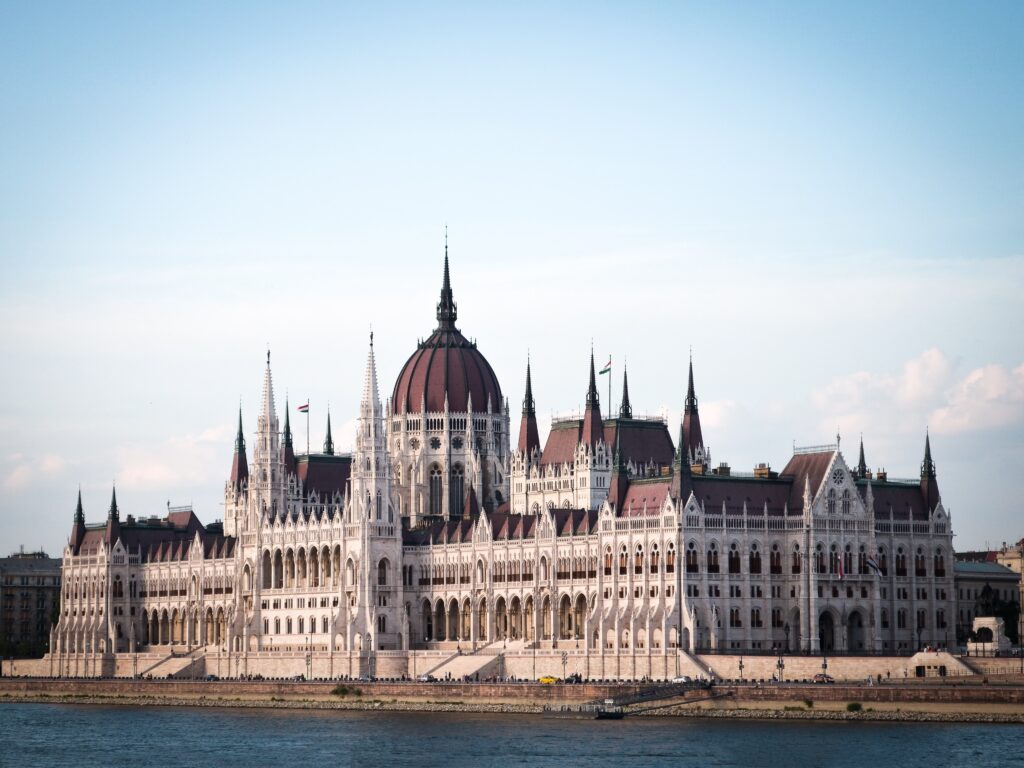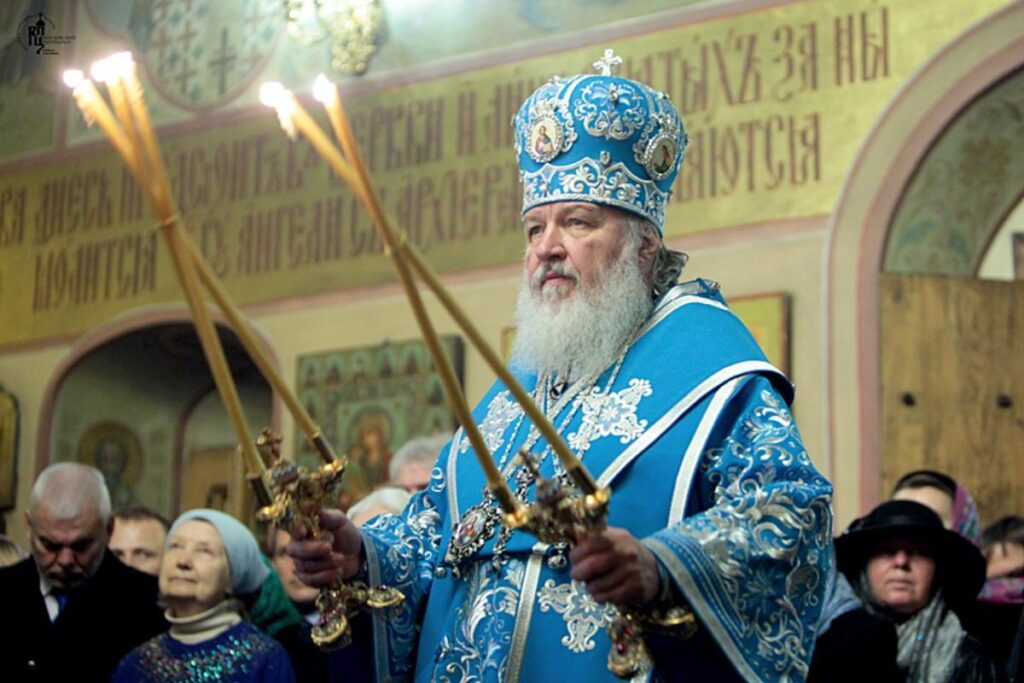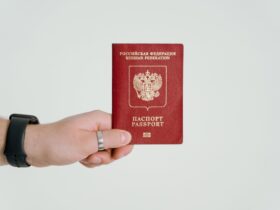Hungary is a landlocked country uniquely positioned in Eastern Europe, with Ukraine to its East and six other countries bordering it.
The country is important to the European Union (EU) and the West — as well as to Russia, which invaded Ukraine in February. Hungary has taken an ambiguous position in response to Russia’s invasion, even though it is part of both the EU and NATO. Russia is not a part of the EU or NATO, largely because of the differing ideologies between the EU/NATO and Russia, including both organizations’ disapproval of Russia’s expansion in Eastern Europe with its invasion of Crimea and now Ukraine.
To understand Hungary’s position between the East and the West, it’s important to first understand Hungary’s past.
Hungary During WWII
In the 1930s, Hungary began relying on Germany and Italy for trade to help pull itself out of the Great Depression. It joined the Axis powers in November 1940 when it signed the Tripartite Pact.
The main reason for joining German forces was that Hungary didn’t want to keep losing territory: Northern Transylvania was in danger of being lost to Romania, which had also joined the Axis powers. To escape the danger of communism from the USSR, it felt that it should align itself with Germany.
Germany began pressuring Hungary to aid in its invasion of the Soviet Union, but Hungary refused. After Hungary was bombed in 1941 by an unknown country but perceived as the Soviet Union, Hungary declared war on the USSR.
Hungary’s alignment with Germany began to weaken when Miklos Horthy, a leader of Hungary through the two World Wars, replaced the Prime Minister with Miklos Kallay. Kallay worked with Horthy to put distance between Hungary and Nazi Germany to gain the favor of the West again.
By 1944, Hitler had learned that Horthy was communicating secretly with the United States and the United Kingdom about peace negotiations. Hitler told Horthy that Hungary would have to fully cooperate and submit to Germany, or the Third Reich would move to occupy Hungary. While Hitler and Horthy were negotiating, German forces quickly moved into Hungary and occupied Hungary in March 1944.
Prime Minister Kallay was replaced by Döme Sztójay, a pro-German candidate who saw submitting to Germany as the only way to keep Hungary “sovereign.” During his reign, more than 550,000 Jewish people were sent to concentration or extermination camps.
In 1944, Hungary lost territory to Soviet troops, and Horthy signed a ceasefire armistice with the Soviet Union. The German government kidnapped Horthy’s son, forcing Horthy to submit in order to save him. Soon after, Horthy was replaced by Ference Szálasi, who served as a puppet for German interests. Because of this, Hungary became controlled entirely by the Third Reich.
As Germany fell in 1944 and began losing territory to the USSR, four parties that had been against Hungary’s involvement in the Axis powers formed the Hungarian Provisional National Government (established with USSR support) in December 1944 and declared war on Germany. The Red Army liberated Budapest in February 1945.
The Yalta Conference of February 1945 gave the Soviet Union a massive amount of political power in Eastern Europe. Each party involved in the conference, the Big Three (the United States, United Kingdom and the USSR), agreed that the liberated countries would be able to “create democratic institutions of their own choice” and to help those countries form governments to hold elections.
However, the Eastern Bloc appeared not to hold up their end of the bargain, as the Soviet Union would still control elections in their “liberated countries” and maintain influence.
Soviet Occupation of Hungary
Postwar Hungary was economically devastated. A three-year plan was enacted to rebuild Hungarian infrastructure and resume trading. The Soviet regime nationalized banking, industry and trade. Soviet troops stationed in Hungary would live off Hungarians’ land and take whatever they liked. Education was centered around communism, and children would join the Hungarian Socialist Youth League. In addition, the Soviet Union forced many Hungarian prisoners of war, among other civilians and ethnic minorities, into gulags (forced labor camps).
As the Soviet’s relationship with the West deteriorated, hallmarked by the Cold War, Hungarian resentment towards their ruling party grew. Imre Nagy, known for criticizing Soviet policies, was put into office in 1953 as Prime Minister. However, a displeased Soviet Union forced him out of office and replaced him with Ernő Gerő. Stalin died in 1953 and was succeeded by Nikita Khrushchev.
Hungarian Revolution of 1956
Khruschev’s secret speech denouncing Stalin in favor of moving back to Leninist-style socialism and the general resentment of Gerő culminated in a student protest on October 3, 1956. 10,000 students took to the streets of Budapest, demanding the end to the Soviet occupation. Party leaders met for an emergency session, and all telephone communications between Hungary and the West were cut off. At its peak, around 100,000 people were protesting, and police began responding with tear gas and shots. The peaceful revolution very quickly became a violent one.
Imre Nagy was reappointed Prime Minister, emboldening activists even further, while the army joined the protesters and gave them arms to strike back against the police. Peasants returned to their fields that had been taken from them, and POWs were broken out of prisons.
Nagy attempted to create peace by asking the Soviets to withdraw their troops but later abolished one-party rule and became the head of a new coalition government representing parties that had been against Soviet occupation. In a bold move, he stated Hungary was withdrawing from the Warsaw Pact on November 1 and asked the United Nations to recognize Hungary as a neutral country.
The Soviet Union was angered, and their troops returned, rushing into Budapest on November 4, killing protestors. Nagy made a statement to Hungarian citizens that the country was fighting back, but within a few hours, he sought safety at the Yugoslav Embassy in Budapest. He was kidnapped and executed two years later.
János Kádár, a defector from Nagy’s party, had flown from Moscow to a small town in Hungary to announce he was taking power back with the support of the Soviets. He declared Nagy’s government illegitimate, announced a new government supported by the Soviet Union and vowed to withdraw Soviet troops from Hungary and suppress the revolution.
Around 2,500 Hungarians died, and 200,000 left as refugees. In 1957, it was declared that Hungary was a dictatorship of the proletariat and that Soviet troops would stay there. However, by the early 1960s, the standard of living rose and farm cooperatives were allowed to produce goods for themselves or to sell. Restrictions on foreign travel for Hungarians were lifted, but Hungary’s economy struggled greatly and a large debt accumulated.
Post-Soviet Occupation
The Soviet Union dissolved formally in December 1991, but Hungary had already created the National Assembly, a system of representative government. Elections were held in the spring of 1990, leading to the victory of a right-center party with the first post-communist Parliament leader Jósszef Antall. In 1944, the ex-communist Socialist Party headed by Gyula Horn won 54% of the seats in the Parliament, and the move to place Hungary in NATO and the European Union, as well as supported the tearing down of the Berlin Wall.
1998 saw the right-winged Fidesz Party, led by Viktor Órban, come to power in the Parliament, which moved Hungary into NATO and began consolidating more power into Parliament, and created a widening gap between left and right-winged Hungarians.
He lost power in 2002 until he regained his position in 2010. Serving as Prime Minister ever since, he has turned away from both communism and liberalism to form what he calls an illiberal democracy.
The governments of Hungary and Russia have had a generally friendly relationship since both leaders came into power. In 2011, the Fidesz party announced the Eastern Opening policy, part of which included opening Hungary to more trade with Russia, and stated, “We need a new opening for the world economy, including an Eastern orientation, while keeping the benefits of our EU membership.”
Órban and Putin also share some similar ideologies – both have clamped down on free speech and democracy and have established laws that allow them to stay in power for long after democratic states would allow.
In late August, Hungary issued a permit for a Russian state-owned company to build two new nuclear reactors in Hungary. Hungary also decided not to give Ukraine military support during the invasion.
Despite Hungary’s apparent friendship with Putin, the Órban government has called for peace and negotiation between Russia and the West because he says that Russia is militarily dominant over Ukraine and Ukraine could not hope to win the war. Hungary and Ukraine have argued over education and language policies, and Órban blocked NATO from holding meetings with Ukraine before its invasion. Hungary supported using EU money to reimburse countries that have sent Ukraine weapons.
Hungary has asked the EU to remove three prominent Russian leaders from an EU sanctions list, which has prompted anger from the EU as it wants to reignite sanctions on Russian officials.
Hungary has had a tumultuous century of war, revolution, and now, a return to authoritarianism. With this understanding of Hungary’s history, it may be easier to understand Órban’s position on Ukraine and Russia – which continues to be ambiguous likely not to anger the EU, NATO and Russia because it wants all three to maintain power and influence.







